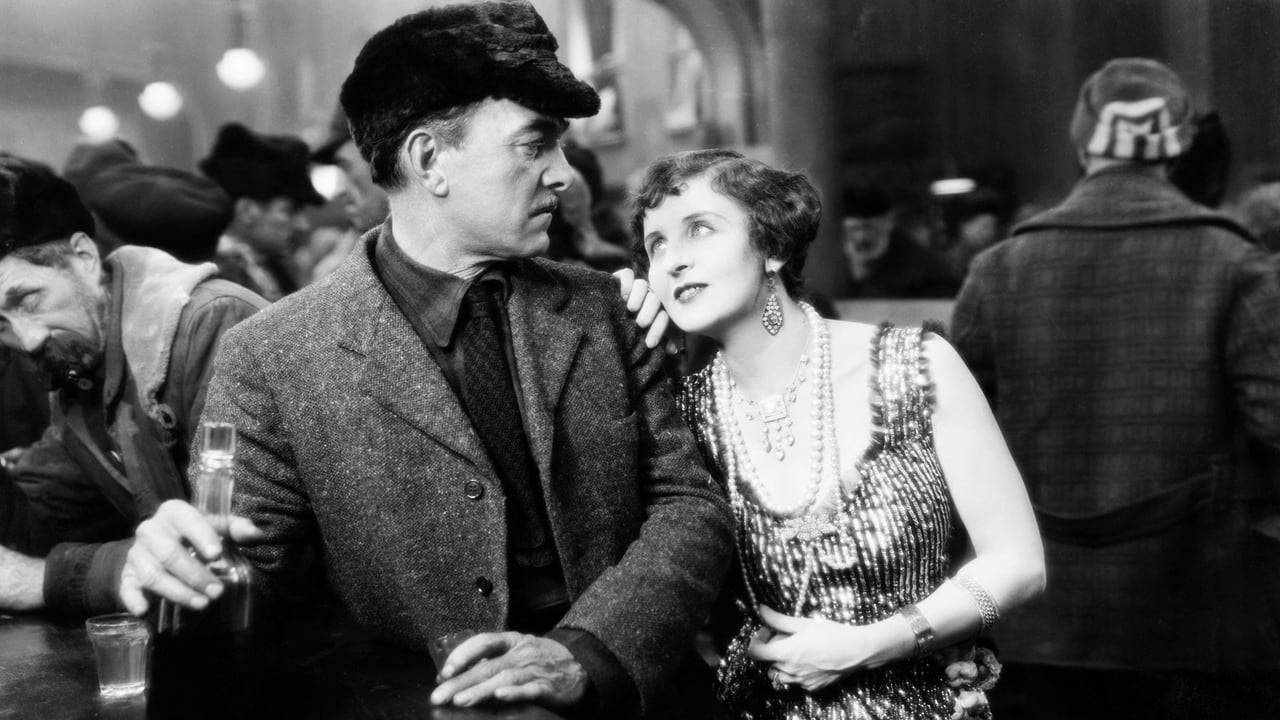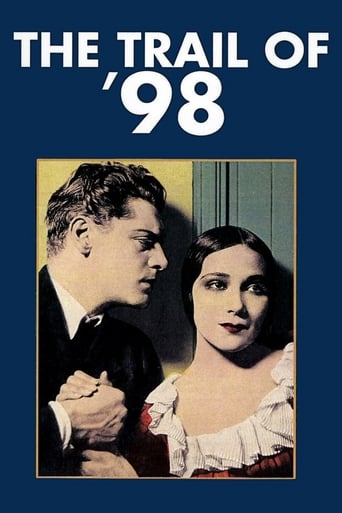

This is one of my favourite films of the late silent era.It has a mixture of drama, suspense,action and comedy to satisfy most tastes. The comedy is provided by Karl Dane, as a Scandinavian saphead who falls for about every con that comes his way. The hero and heroine suit each other well. The villain is about as bad as you could want and the fight scene with the hero is one of the most realistic I have ever seen.There are some pretty good special effects and some strong supporting characters. The way in which people come to accept the fate of their companions tells us how harsh conditions must have been and how hard those prospectors had to become to survive. Add to this a theme song, background music and sound effects....what more could you ask for?
... View MoreKnowing that four men died making this movie makes this one a bit creepy to watch. Apparently back in the 'good old days', such losses were regrettable but acceptable. At about the same time people died making "The Trail of '98", several more were dying in order to make the infamous "Noah's Ark"! When you watch "The Trail of '98", you can sure imagine how so many men died--the film was stuffed full of insanely vivid stunts and location shoots that were just awful. The end result is truly amazing--one of the best of the silents-though the cost sure didn't justify this.The film begins with the country becoming hysterical with gold fever after the discovery of the metal in the Klondike region--all told with a series of vignettes. The first third of the film consists of this well as the insanely arduous trek to the gold fields. This is probably the most exciting part of the film--with one over-the-top stunt after another. If stuntmen weren't killed in the avalanche scene, then they probably perished in the hazardous trip down the rapids! I really would have loved to have seen this one on the big screen.The second portion of the film has more to do with life in the Klondike and its impact on the central characters. In particular, it focuses on Delores del Rio and her fiancé, Ralph Forbes. She is miserable and at the end of her ropes (justifiably so). He agrees to take her back home but, at the last minute, there's word of a new strike and he abandons her! She is forced to survive with nothing but her good looks--and it's very strongly implied she sells her body in order to eat. When he returns, rich, it looks like it's too late--she's not the same girl she once was and she's not in a particularly forgiving mood! There's quite a bit more to the film than this--including some harrowing scenes involving starvation and death due to exposure to the elements--and wolves apparently eating one guy! In fact, this brings me to one of the better aspects of the film--unflinching violence. Normally I don't like violent content in films, but in a film like this it IS necessary. A Post-Code film (1934 and later) would have eliminated the blood, softened the film and totally eliminated the insanely dangerous burning to death scene--but the impact would have been far less. Brilliantly done but also a film that might shock you as well! Overall, there's really nothing to dislike about the film other than its stupid waste of four lives due to some poorly done stunt-work--or perhaps stunts that were attempted that simply were too dangerous to even be attempted. Still, the end results are spectacular, there's no denying that.By the way, while VERY different in tone, imagine a double-feature with this and "The Gold Rush"! Wow.
... View MoreAfter gold is discovered in Alaska, some lower 48 United States residents decide to go there, and become millionaires. The journey proves arduous, and several die. Attractive Dolores Del Rio (as Berna) and Ralph Forbes (as Larry) are two who hope for riches - they meet aboard ship (the first leg of the journey), and fall in love. Out to stake a claim, Mr. Forbes teams up with "dumb Swede" Karl Dane (as Lars Petersen), grizzled Tully Marshall (as Salvation Jim), and sneaky George Cooper (as Samuel "The Worm" Foote). But, while Forbes is out of the picture, wicked Harry Carey (as Jack Locasto) tries to steals Ms. Del Rio's virtue..."The Trail of '98" is a top MGM silent, nicely directed by Clarence Brown. The synchronized sound effects are great, especially during the grand fire sequence occurring near the end of the picture. Most of the first hour consists of grueling location scenes (four stuntmen were reportedly killed during the making of the picture). They are definitely worth seeing. The characters are introduced, but left too long with only sketchy story lines - and, what's plotted is woefully ordinary, considering the production values.****** The Trail of '98 (3/20/28) Clarence Brown ~ Dolores del Rio, Ralph Forbes, Karl Dane, Harry Carey
... View MoreIn 1896 gold was discovered on a small creek in the Klondike district of Canada's Yukon region. Despite the extreme remoteness of the location and the tremendous difficulties involved in getting there, over the next four years 30,000 people would travel to the boom town of Dawson City, desperate for wealth. Eventually, $100,000,000 in gold would be discovered by these hardy argonauts. THE TRAIL OF '98 tells their story.One of the last epic silent films, MGM spared no expense and filmed largely on location. Although almost forgotten today, this is a wonderful movie full of romance & adventure. Its most famous scenes involve the hideous climb over Chilkoot Pass, which separated the disembarkation point of Skagway from the Yukon River, where the gold seekers had to build their own boats and run the rapids down to Dawson. The shots of the long line of men & women, toiling like ants up the steep slope of Chilkoot, with the weak dying along the way, isn't soon forgotten.The cast is first rate, although many of them are forgotten now: Dolores Del Rio, Ralph Forbes, Harry Carey, Karl Dane, Emily Fitzroy, Roscoe Karns, Tully Marshall & Doris Lloyd. Playing saints or sinners, they help make this film truly memorable.Tragedy struck during the filming of the short river rapids sequence. A cord was strung across the river, but the safety loops hanging from it were allowed to become knotted & slippery, thus giving the stuntmen nothing to grab and cling to as they swept beneath it. Of the eight stuntmen shown in the film running the rapids, four were to drown; two of the bodies were never recovered.
... View More